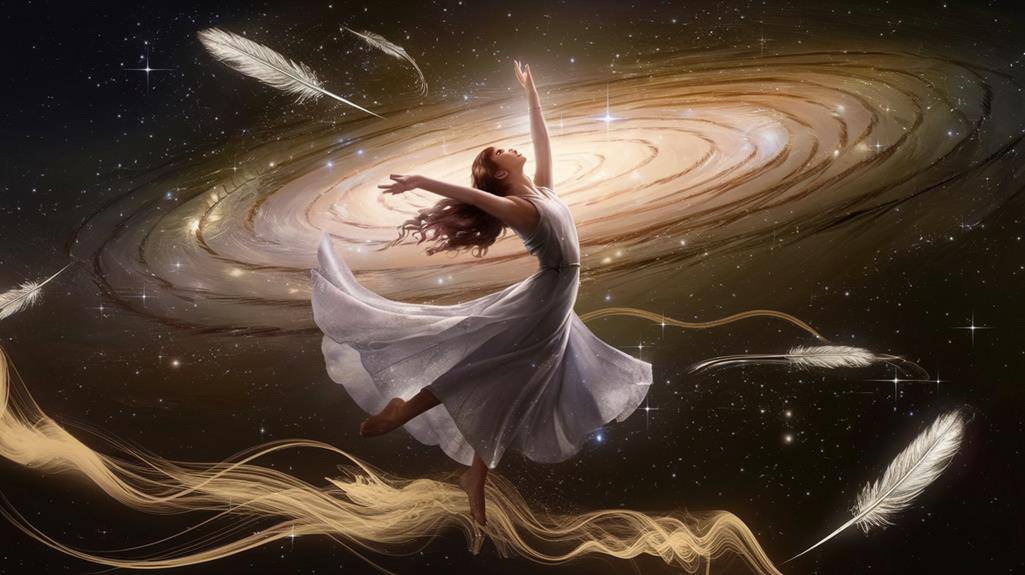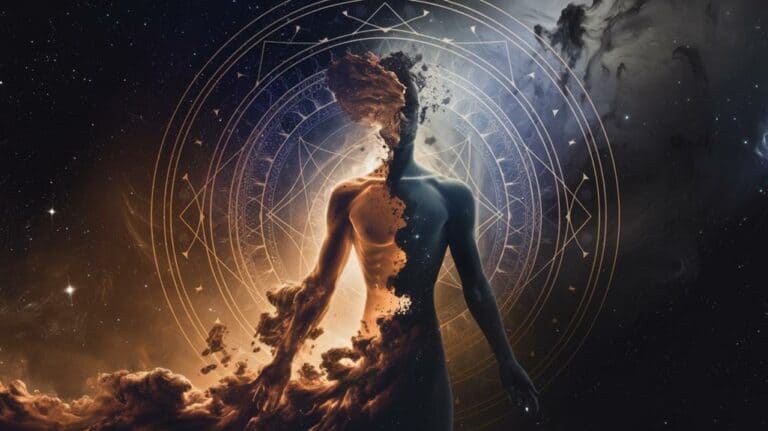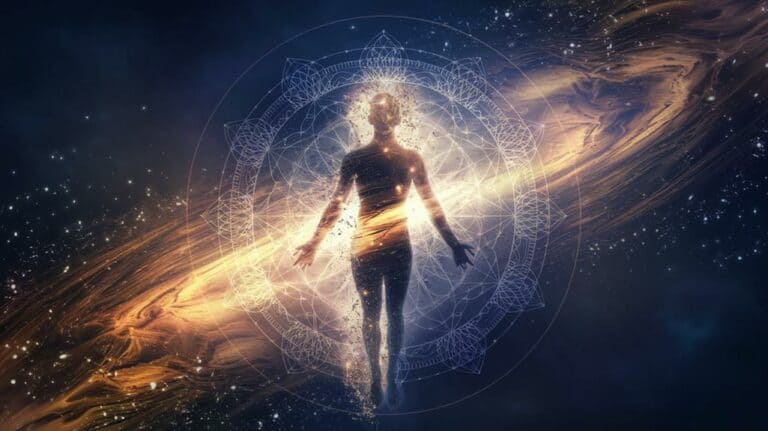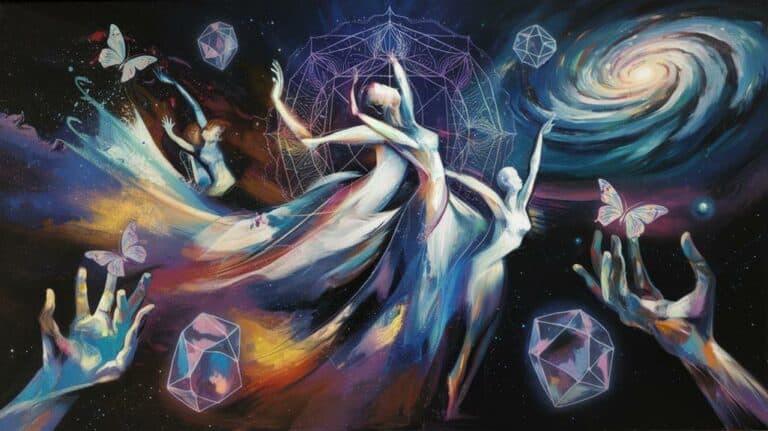Mysticism and the Practice of Ecstatic Poetry
You’ll find that ecstatic poetry exists at the intersection of divine revelation and human expression, where mystics throughout history have transformed their transcendent experiences into language that pulses with sacred energy. As you explore this ancient practice, you’ll discover how poets like Rumi and Kabir didn’t simply write about spiritual encounters—they created linguistic portals that continue to transport audiences into altered states of consciousness. Whether you’re drawn to the rhythmic chants of Sufi practitioners or the nature-inspired verses of Buddhist poets, this journey into mystical verse promises to unveil deeper dimensions of both literary and spiritual understanding.
The Origins of Ecstatic Verse
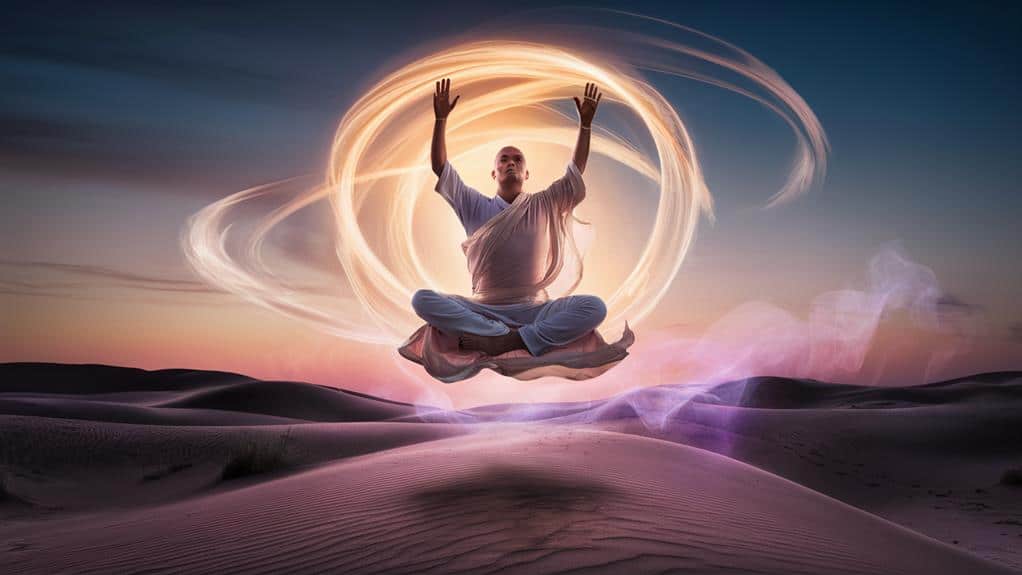
The earliest forms of ecstatic verse emerged from ancient religious rituals, where poets and mystics used rhythm and metaphor to express divine encounters. You’ll find these sacred origins woven through humanity’s earliest texts, from Sumerian temple hymns to Egyptian pyramid inscriptions, where priests channeled their visions into carefully crafted verses that bridged earthly and celestial domains.
When you explore deeper into these ancient traditions, you’ll discover how shamanic chants and mystical utterances evolved into more structured forms of spiritual poetry.
You’re walking in the footsteps of those who first dared to capture transcendent experiences in words, transforming personal revelations into universal expressions of divine connection. In these early verses, you’ll recognize patterns that still resonate today – the use of repetition to induce trance-like states, vivid imagery that defies ordinary perception, and language that pushes against its own limitations to describe the indescribable.
Through these techniques, ancient poets created pathways for you to access similar states of consciousness, inviting you to participate in their journey toward spiritual awakening and enlightenment.
Mystical Traditions in Poetry
Exploring mystical traditions across cultures reveals common threads in how poets express spiritual enlightenment. You’ll find that mystic poets, whether Sufi, Buddhist, or Christian, share an uncanny ability to translate ineffable experiences into words that resonate across time and space.
Through their verses, you’re invited to witness moments of divine connection that transcend ordinary consciousness. When you investigate the works of Rumi, St. John of the Cross, or Kabir, you’ll discover how they’ve shaped their respective traditions while speaking a universal language of the soul.
They’ll show you how the boundaries between self and cosmos dissolve in moments of ecstatic union. You’ll notice how these poets don’t just describe their mystical experiences – they transform language itself into a vehicle for transformation.
In their traditions, poetry isn’t merely an art form; it’s a spiritual practice that opens doorways to higher consciousness. You’ll find that their verses often employ paradox and metaphor to express what can’t be captured through ordinary speech, creating pathways for your own spiritual exploration and understanding of the divine mystery.
Language Beyond Ordinary Reality
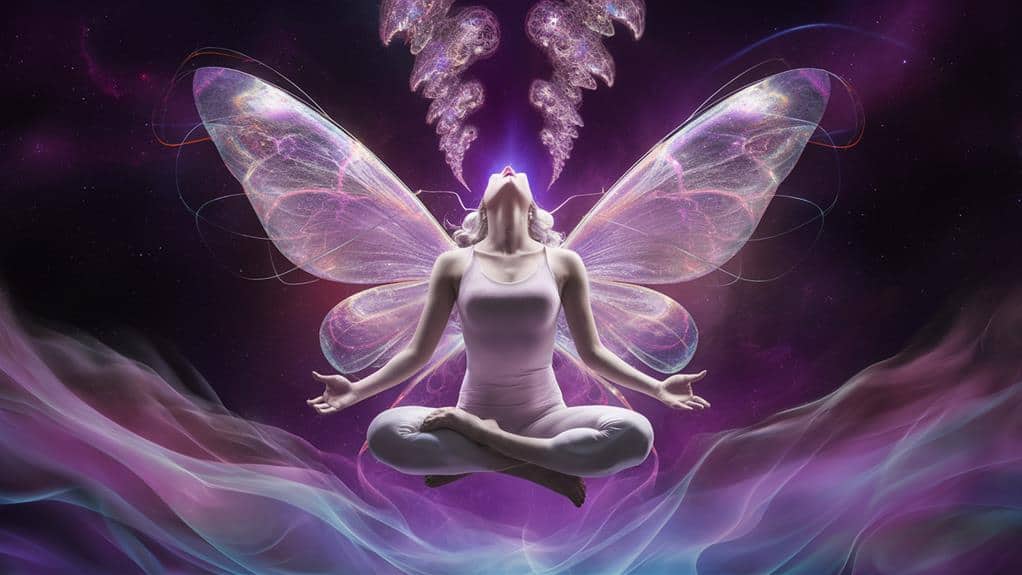
Mystical expression demands a radical reimagining of language to capture experiences beyond ordinary perception. When you’re trying to describe the indescribable, you’ll find that conventional words and syntax can’t contain the vastness of mystical insight.
You’re forced to bend language until it breaks, letting the ineffable shine through the cracks of fractured grammar and reimagined vocabulary.
In your quest to express the inexpressible, you’ll discover that metaphor becomes more than mere ornament – it’s a necessity, a bridge between known and unknown domains.
You’re not just describing a sunset; you’re reaching for the luminous threshold where physical light transforms into inner illumination. The boundaries between subject and object dissolve, and you’ll find yourself writing from a place where “I” and “other” merge into unity.
Your words must dance on the edge of comprehension, creating resonances that bypass the rational mind and speak directly to the reader’s deepest knowing.
Through paradox and symbolic language, you’re inviting others into a space where ordinary reality gives way to profound mystery, where the limitations of everyday speech fall away to reveal glimpses of the infinite.
Sacred Rhythms and Repetition
Beyond reshaping language itself, mystics have long recognized rhythm and repetition as gateways to transcendent states. You’ll find this sacred cadence in everything from Sufi whirling to Buddhist chanting, where the steady pulse of repeated sounds and movements carries you beyond ordinary consciousness.
When you engage with mystical poetry, you’re entering this same ancient stream, letting the rhythmic flow of words wash over your awareness until the boundaries between self and language begin to dissolve.
In your own exploration of sacred verse, you’ll discover how repetition works like a spiritual technology, breaking down your habitual thought patterns through mantric iterations. The pulse of repeated phrases creates a hypnotic effect, drawing you deeper into a contemplative space where meaning transcends mere words.
You’re no longer simply reading – you’re participating in a ritual that’s been refined over millennia. As you surrender to these sacred rhythms, you’ll notice how they mirror the cycles of breath, heartbeat, and cosmic motion.
This alignment with universal patterns opens doorways to experiences that your everyday mind can’t access through logic alone.
The Poet as Spiritual Channel
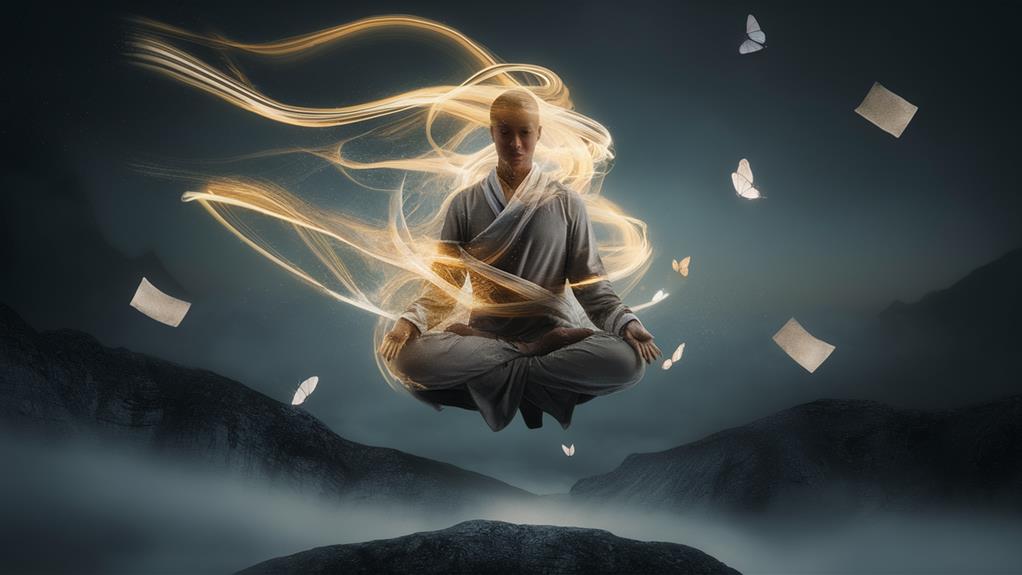
Throughout the ages, mystic poets have served as conduits between divine territories and earthly existence, transforming ineffable spiritual experiences into tangible verse. When you open yourself to this sacred transmission, you’ll find that mystical poetry isn’t merely written—it’s channeled from dimensions beyond ordinary consciousness, flowing through the poet’s awakened spirit.
You’ll discover that true mystic poets don’t simply arrange words on a page; they become vessels through which divine wisdom speaks. As you explore deeper into their work, you’ll recognize how they’ve learned to dissolve the boundaries between self and source, allowing universal truths to pour through their verses unimpeded.
This dissolution requires a profound surrender, where you must release your grip on ego and rational thought to embrace the mystery that flows through you. In this state of divine receptivity, you’re no longer crafting poetry—you’re participating in a sacred act of transmission.
Your words become bridges between worlds, carrying readers across the threshold of ordinary perception into expanded states of awareness. You’re not just a writer; you’re a doorway through which the infinite speaks to the finite.
Breaking Through Linear Time
When mystic poets enter the channeling state, they often find themselves breaking free from time’s linear constraints. You’ll notice how their verses dance between past, present, and future, weaving moments together like threads in an infinite tapestry.
In their trance-like state, you’re invited to witness how they dissolve the boundaries between “then” and “now,” creating a portal where all moments exist simultaneously. As you immerse yourself in their words, you’ll discover how they’re accessing what mystics call “eternal time” – that sacred space where chronological order becomes meaningless.
You’re no longer bound by the tick-tock of conventional time; instead, you’re floating in a dimension where ancient wisdom and future revelations coexist. Through their poetry, you’ll experience how a single moment can expand into infinity, while eons compress into a heartbeat.
Their verses don’t just describe transcendent experiences – they become the very vehicle through which you can step outside time’s rigid framework. In this space, you’ll find that linear progression isn’t the only way to experience reality; there’s a vast ocean of timeless consciousness waiting to be explored.
Metaphor as Mystical Gateway
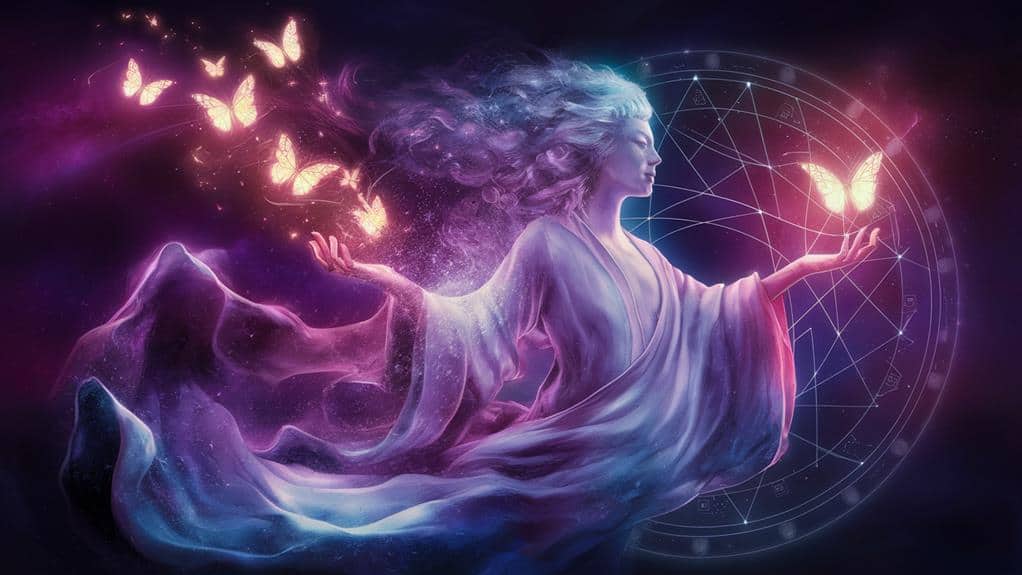
Transforming the ineffable into tangible experience, mystic poets harness metaphor as their most powerful tool for bridging the divine and mundane. When you encounter their carefully crafted images – a moth drawn to flame, a drop merging with ocean, or a reed separated from its riverbed – you’re stepping through portals of understanding that transcend ordinary perception.
These metaphors don’t simply describe; they transmute your consciousness into new dimensions of awareness. As you explore deeper into mystical poetry, you’ll find that metaphors serve as initiatory keys, opening doors between worlds that logic alone can’t access.
A single image – like Rumi’s reed flute crying for reunion – can shatter your conventional understanding and reconstruct it in alignment with deeper truths. The metaphor becomes a living bridge you can cross, leading you from known territory into the vast unknown of mystical insight.
You’re not just reading about transformation; you’re experiencing it directly through the alchemical power of these carefully chosen symbols. In this way, metaphor doesn’t just illustrate the mystical journey – it becomes the journey itself, carrying you beyond the limitations of ordinary language into direct spiritual perception.
Transcendent Themes Across Cultures
While mystical metaphors take unique forms across traditions, the underlying themes they express remain remarkably constant.
You’ll find that whether you’re exploring Sufi poetry, Buddhist koans, or Christian mystical writings, certain transcendent motifs emerge: the dissolution of ego, union with the divine, and the limitations of ordinary language to capture ineffable experiences.
When you investigate these cross-cultural expressions, you’ll discover how mystic poets across time and space have grappled with similar paradoxes.
They’ve written of the void that’s somehow full, the silence that speaks volumes, and the darkness that illuminates.
You’ll notice how Rumi’s whirling devotion echoes in San Juan de la Cruz’s dark night of the soul, and how Kabir’s stark revelations mirror the insights of Zen masters.
In every tradition, you’ll encounter the recurring metaphors of fire, water, and light – each pointing toward experiences that transcend cultural boundaries.
These shared themes don’t just suggest universal human experiences; they reveal how mystics from vastly different backgrounds have mapped similar territories of consciousness, inviting you to recognize your own potential for transcendent awareness.
Writing Into Divine Experience
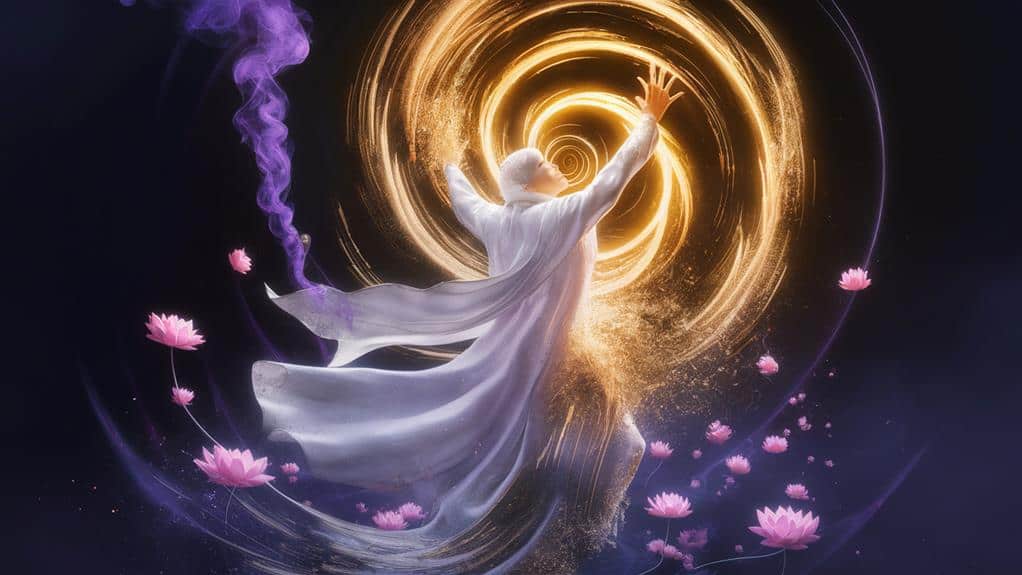
Through the mystic’s pen flows an attempt to capture the uncapturable – the direct experience of divine reality.
You’ll find yourself wrestling with language that strains against its own limitations, reaching for words that might hint at what lies beyond words. As you write, you’re not merely describing an experience but recreating it through the alchemy of language.
When you’re writing into divine experience, you’ll discover that traditional narrative structures often dissolve. You’re called to embrace paradox, to let contradictions stand unresolved as truth reveals itself through mystery rather than logic.
Your metaphors become bridges between the tangible and intangible, while your rhythms mirror the pulse of ecstatic revelation.
You’re not seeking to explain but to evoke – to create a resonance in your reader that awakens their own capacity for transcendent experience.
Each line you craft becomes a doorway through which divine presence might enter, each image a vessel that might hold, however briefly, the infinite.
You’re writing from the edge where language meets silence, where meaning trembles on the threshold of the ineffable.
Modern Mystic Poets
Contemporary mystic poets stand at the intersection of ancient traditions and modern consciousness, bringing fresh energy to spiritual verse. You’ll find their work pulsing with an electric awareness of both timeless wisdom and present-day complexities, as they weave sacred understanding into the fabric of everyday life.
These poets don’t just observe the divine – they embody it through language that bridges earthly experience with transcendent insight. When you immerse yourself in their verses, you’ll discover how they transform ordinary moments into gateways of spiritual revelation.
Whether it’s Mary Oliver finding God in wild geese or Jane Hirshfield illuminating Zen wisdom through simple observations, modern mystic poets help you see the sacred in the mundane. They’re writing from deeply personal encounters with mystery, yet their words resonate with universal truth.
You’ll notice how they’ve moved beyond traditional religious imagery to forge new metaphors that speak to contemporary spiritual seekers. Through their craft, they’re creating spaces where ancient mystical traditions can breathe and evolve, showing you how eternal truths continue to unfold in our rapidly changing world.



